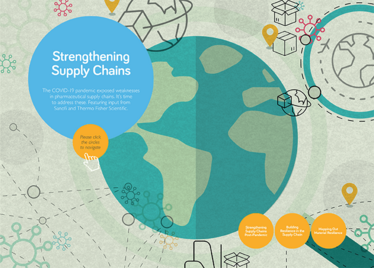Strengthening Supply Chains: Download the Thermo Fisher Scientific eBook
How should companies build resilient supply chains?
sponsored by Thermo Fisher Scientific

Pre-existing weaknesses in pharmaceutical supply chains were unearthed by the COVID-19 pandemic. This free-to-download eBook features insight from Thermo Fisher Scientific and Sanofi.
Prateek Gadhoke, Global Head of Specialty Care Procurement at Sanofi, explains what makes a strong supply chain. In his view, ideal procurement systems should facilitate the launch, manufacture, and distribution of drugs while also insuring against logistical shocks – such as pandemics. He describes how procurement is evolving at Sanofi and why integrated demand planning is crucial. He says, “It [the pandemic] has forced us to focus to secure purchase orders well ahead of time, which ensures demand signalling and requires effective communication with core partners. Even before the pandemic, the progress of biotech innovation had led to a demand surge. The rate of collaboration will continue to increase as manufacturers increasingly appreciate that suppliers’ specialized capabilities provide competitive advantage.”
Christine Callahan, Vice President of the Global Supply Chain for Life Sciences and Bioproduction at Thermo Fisher Scientific, discusses how suppliers and customers need to reimagine their business models and relationships to succeed in today’s challenging landscape. She explains how the COVID-pandemic has affected Thermo Fisher Scientific, how the company has responded, and how risk can be minimized in supply chains. She says, “Most companies give a nod to disaster planning, but perhaps now we need to reevaluate these plans more often. We need more scenario-based alternatives to remain flexible enough to cope with the impact imposed by a pandemic.”
Finally, Luis (Lucho) Bianchi Pintos, Vice President of Procurement, BioProduction at Thermo Fisher Scientific, discusses what resilience looks like when sourcing – or providing – raw materials during a pandemic – and how industry attitudes have changed in this area. He says, “Maintaining supply chains is very much about managing risk. Companies must identify risk, acknowledge its presence, and understand how it manifests across whole risk, acknowledge its presence, and understand how it manifests across whole processes – a fine balancing act!”



















